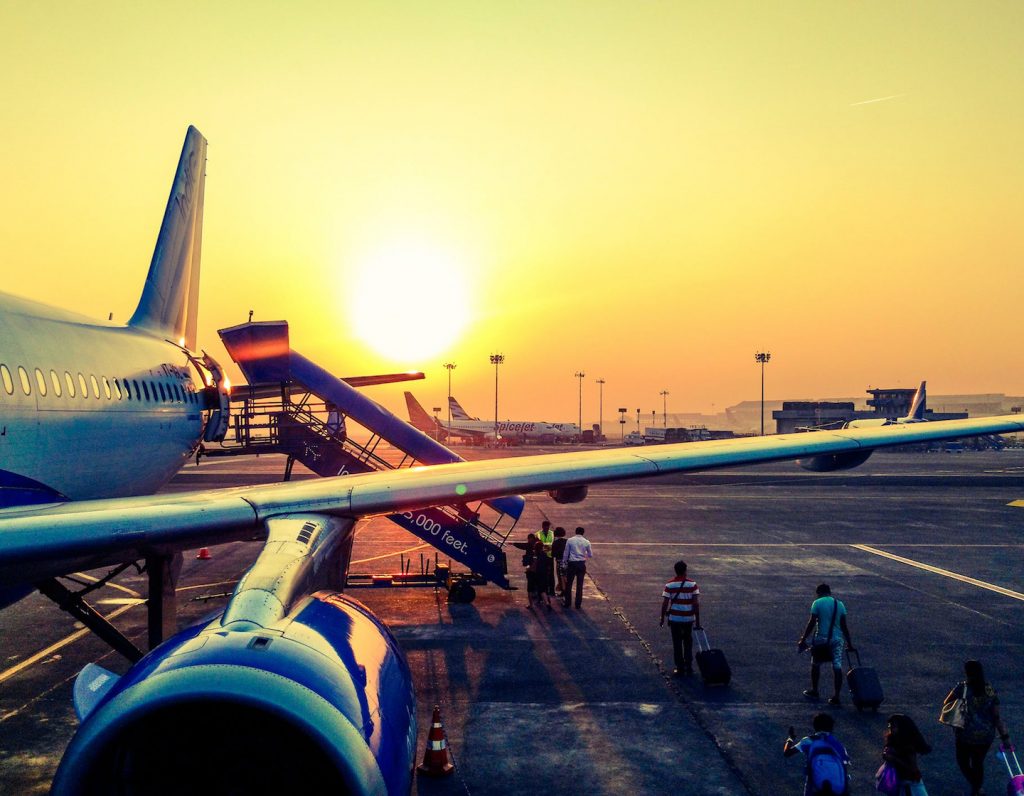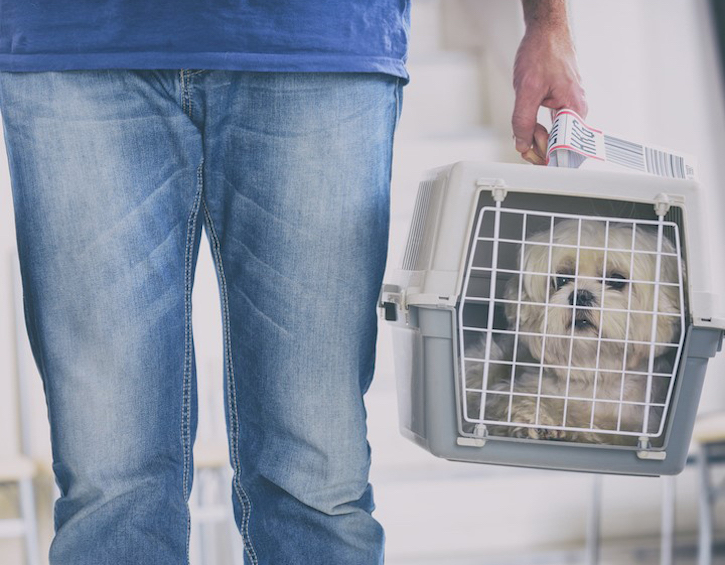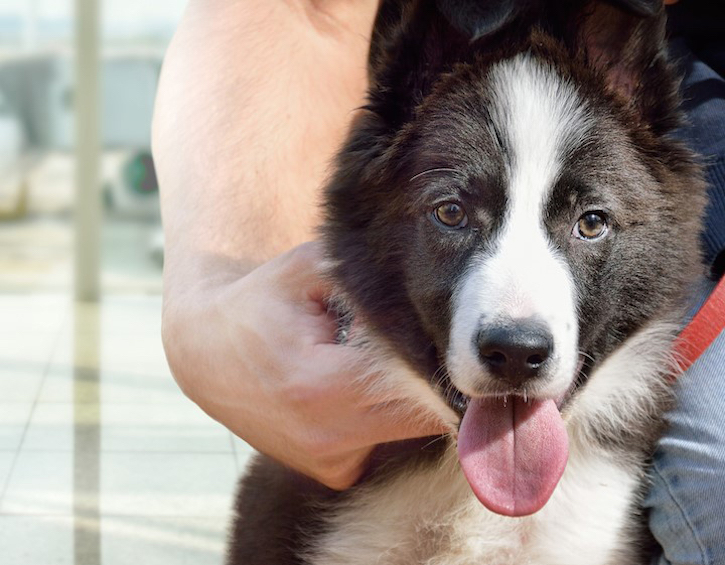
No pet left behind!
You or your partner gets a fabulous offer that neither of you can refuse, and now you have to pick up and move the family – and your fur babies! – across the globe. We’ve been there! Packing boxes, coordinating the shippers, and ensuring the entire process goes smoothly are but a few of the constant thoughts running through our minds. Dog, cat, rabbit, hedgehog – regardless of species, they’re a part of the family and there’s no way we’re leaving them behind! So, how do we arrange to greet their slobbery chops and wagging tails at the other end? We’ve turned to Dr. Gerry Pahl, qualified Veterinary Surgeon and founder of PetExportVet for his expert advice and reassurance. Not sure where to begin? Read on…

Do Your Research
Preparation is key. Relocating your pet is not always a (dog) walk in the park, and you need to be prepared on both sides of the move. “Some countries have an extensive clearance procedure which needs to be taken into consideration, too,” says Dr Gerry. Depending on where you intend to relocate, the time needed to ensure that your pet is cleared to fly can seriously vary. “In some cases, those moving to Australia and New Zealand will need to start the process up to eight months before their scheduled flight, whereas the USA may only need [several weeks].”
Requirements differ from country to country and where, for example, the UK is quite straightforward in its process, other countries may require a longer string of check-ups and vaccinations. It’s also important to check with your agent which species are allowed in which parts of the country, as this can sometimes vary; there may be laws about importing non-native species. Always check these before factoring in your leave dates, as your pet may otherwise face a lengthy quarantine period.
Preparing Your Pet to Fly
Health checks and admin aside, our main priority is to make the process as stress-free as possible for our pets. According to Dr. Gerry, “The most important thing is crate conditioning.” With your departure date in mind, “We will normally get the crate to the owner well in advance so that they can start using training techniques. “Cats are generally easy going, however with dogs, we want to reduce their anxiety.” Start by putting their favourite mat or rug in the crate, and keep the door open at all times. “Feed your dog treats and even their meals in the crate so they can begin to grasp the concept of confinement. When they’re used to the environment, try closing the gate for short periods of time so they can get used to what it would be like during the flight.”
Know that the door will be closed until they arrive at their destination, so it’s important to get your pet as used to the crate as possible. Research has shown that the risks of sedatives far outweigh the benefits (respiration rate is depressed and the animal has a reduced ability to regulate their body temperature), however, Dr. Gerry recommends natural remedies for anxiety. “DAP (Dog-Appeasing Pheromones) is a natural, calming remedy that can be worn in the form of a collar and applied a few weeks before travelling, and Adaptil can be ordered from speciality stores too, but the priority is to keep the environment as calm as possible.”
Relocation agents can collect your pet prior to “pack up day,” which can limit them from picking up on (naturally!) a lot of stress as you prepare to move. “We have to remember that some animals may have pre-existing medical issues or diagnosed anxiety which requires medication too, so we need to take a look at their history and work out what’s best for them.”

Commonly Asked Questions:
Are the airline conditions hazardous to my pet? Where will they be stowed?
According to Dr. Gerry, “There are a lot of misconceptions about what it’s like in the cargo hold,” and you have to remember that not all aircraft are equipped to take pets. However, “the ones that do are geared for it.” If you have a small animal, some airlines, such as Lufthansa, might allow your pet to travel with you in the cabin. However, Dr. Gerry says, “I’m not a fan of cabin travel as the conditions can still be extremely cramped.”
Rest assured however, your pets are kept in a specific area of the hold, away from the major cargo, the crates are fastened down to a metal pallet and the area is climate controlled. “Most people aren’t aware that the same air which circulates the cabin is equally circulated in the hold. Pilots and crew are informed prior to the flight that pets are on board and thus the flight is set up for this. The temperature is controlled by the pilot and using a flight manifest checklist, the area is set up to ensure that the environment is at its optimum,” continues Dr. Gerry. “They are comfortable down there and perfectly safe.”
Do we need to provide food and water during the flight? Should I feed my pet as normal before the journey?
The most important thing is that your pet gets enough exercise before the flight. If you’re using a relocation agent, you’ll have a plan in place in regards to pickup, but note the time and make sure you go for a long walk (or, if your pet is not a dog, play with them a lot) and tire your pooch out. “If your flight is in the morning, they will be collected very early, so I would advise that you don’t give them breakfast beforehand,” says Dr. Gerry. “And if your flight is in the evening, give them breakfast in the morning but nothing after midday.” The export crate should come with a water bottle attached, however, if not, you can easily purchase one from Whiskers and Paws.
Are there an age or breed restriction to consider before exporting my pet?
“Generally there are no age restrictions,” says Dr. Gerry. “However, older dogs and cats are more prone to health issues which might be more significant on a flight.” Some airlines will restrict animals until they are at least four months old, “but as long as they are healthy there shouldn’t be any issues.”
Be careful if you own a controversial breed. “Most countries and airlines will traditionally restrict ‘fighting’ dog breeds.” For example, you aren’t able to import American Pitbull Terriers into Hong Kong and most countries will have the same list of “banned” animals.
Another factor to consider is that many airlines are now putting in a ban for ‘snub-nosed’ breeds. “If you’re relocating from Kuala Lumpur, for example, there are no direct flights which will allow nub-nosed dogs. Cathay Pacific and Malaysian Airlines definitely won’t accept them, and you may find yourself in a predicament.” The risks of flying a snub-nosed dog are assumed to be higher due to breathing restrictions and many airlines aren’t prepared to take the risk.
Is it necessary to use an agent? Can I organise the export myself?
“There isn’t anything stopping you from organising the export yourself. The only restriction you may encounter would be that some airlines won’t allow a private individual to make a flight booking for their animal,” says Dr Gerry. If you have the time and the energy to arrange everything on your own, you can. However, if there is a problem or any mistakes made, those can be extremely expensive to rectify. When you hire an export agent, you’re paying for their knowledge and experience, “as well as someone to take on the responsibility of doing all of the work. There is an added assurance that if something were to go wrong with the process, they could remedy that.” For most people, it’s comforting to know that your preferred agent has everything covered. Moving is stressful enough, and if an agent can provide door-to-door service, it’s a load off of their shoulders.
I’m moving to Hong Kong with my pet, is there anything I should know?
“All animals must be exported into Hong Kong via cargo – unfortunately, you don’t have a choice in that and it must be arranged through an airline,” states Dr. Gerry. On arrival, dogs will be issued a Hong Kong dog license given a rabies vaccination and be microchipped (if they don’t have one already). “I would also recommend researching into what life in Hong Kong with a pet is like before moving here too – just so you’re prepared.” Let’s just say, it can be a little difficult for a pup who’s used to lots of grass! Click here for more information on the requirements for bringing cats, dogs and other animals into Hong Kong.

Recommended Relocation Agents in Hong Kong:
- PetExportVet (Dr Gerry has over 20 years of veterinary experience and 10 years in pet export)
- International Pet Travel (ask for George Yung who is highly recommended)
- Aeropet
- PetRelocation
- Ferndale Kennels and Cattery (ask for Carmen & Stacey who both come highly recommended)
- Relo Paws
- Pet Movers HK
This article was originally published on 3 July, 2017 on Sassy Hong Kong.
 View All
View All










 View All
View All




 View All
View All


 View All
View All










